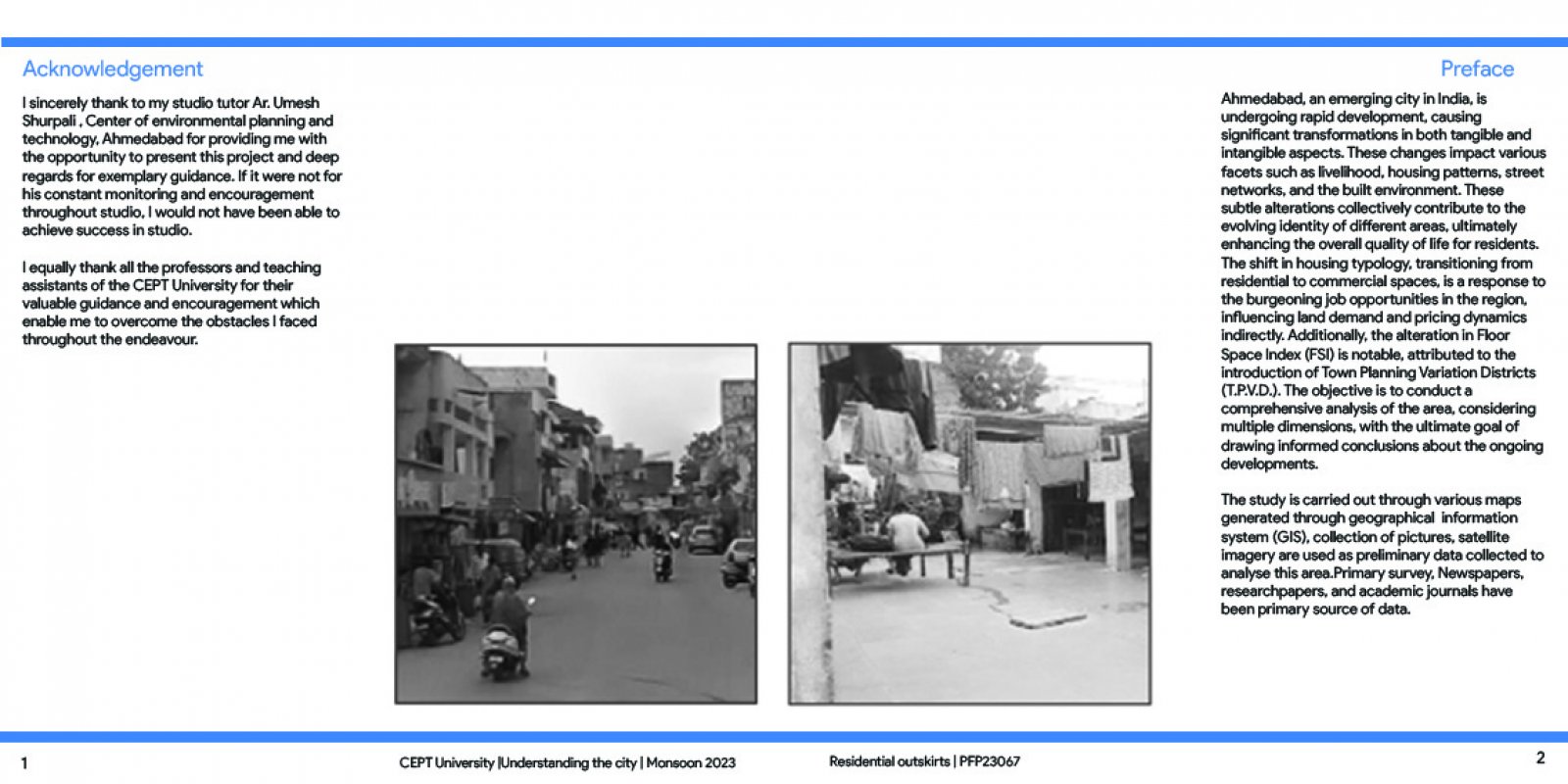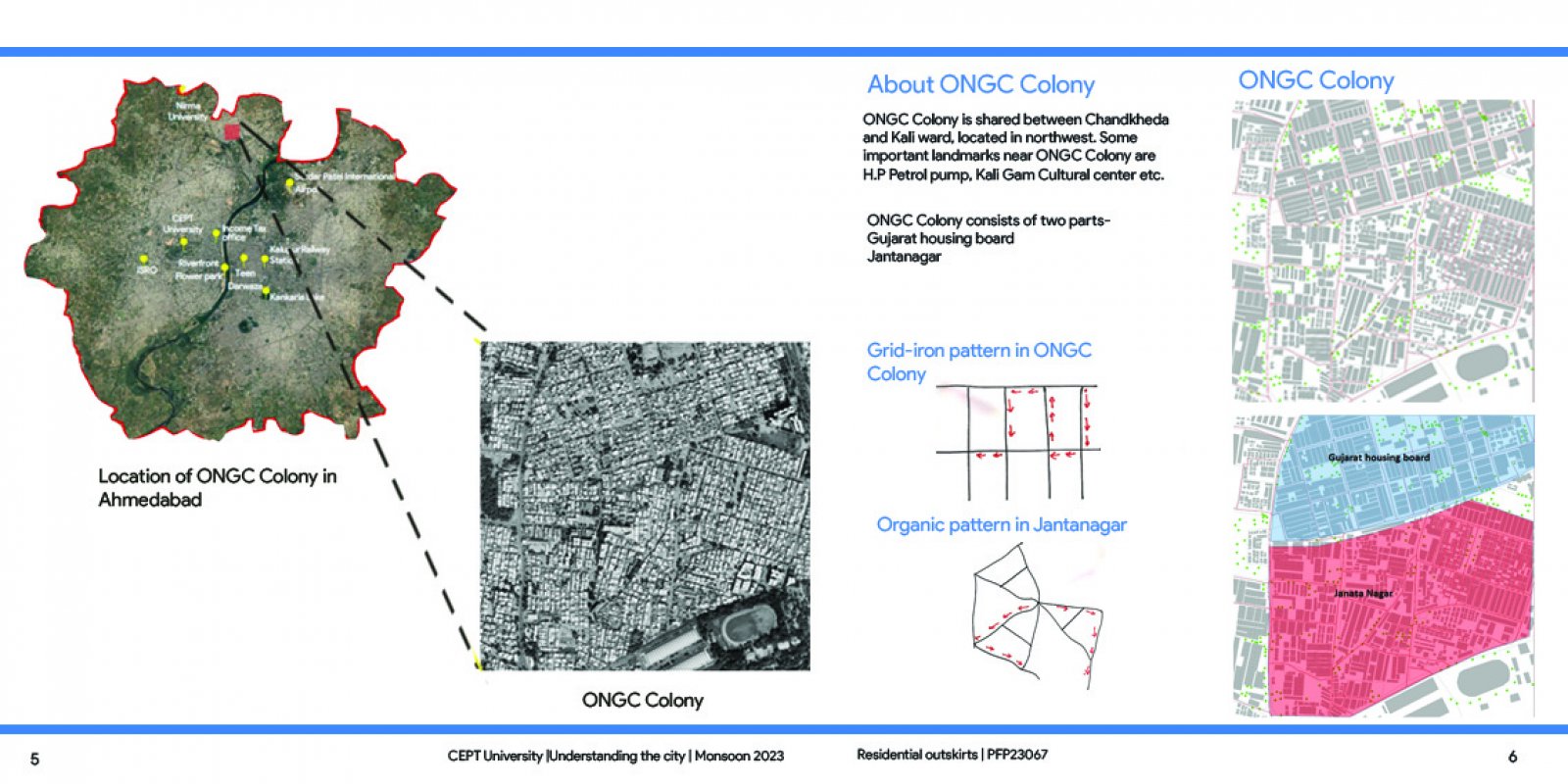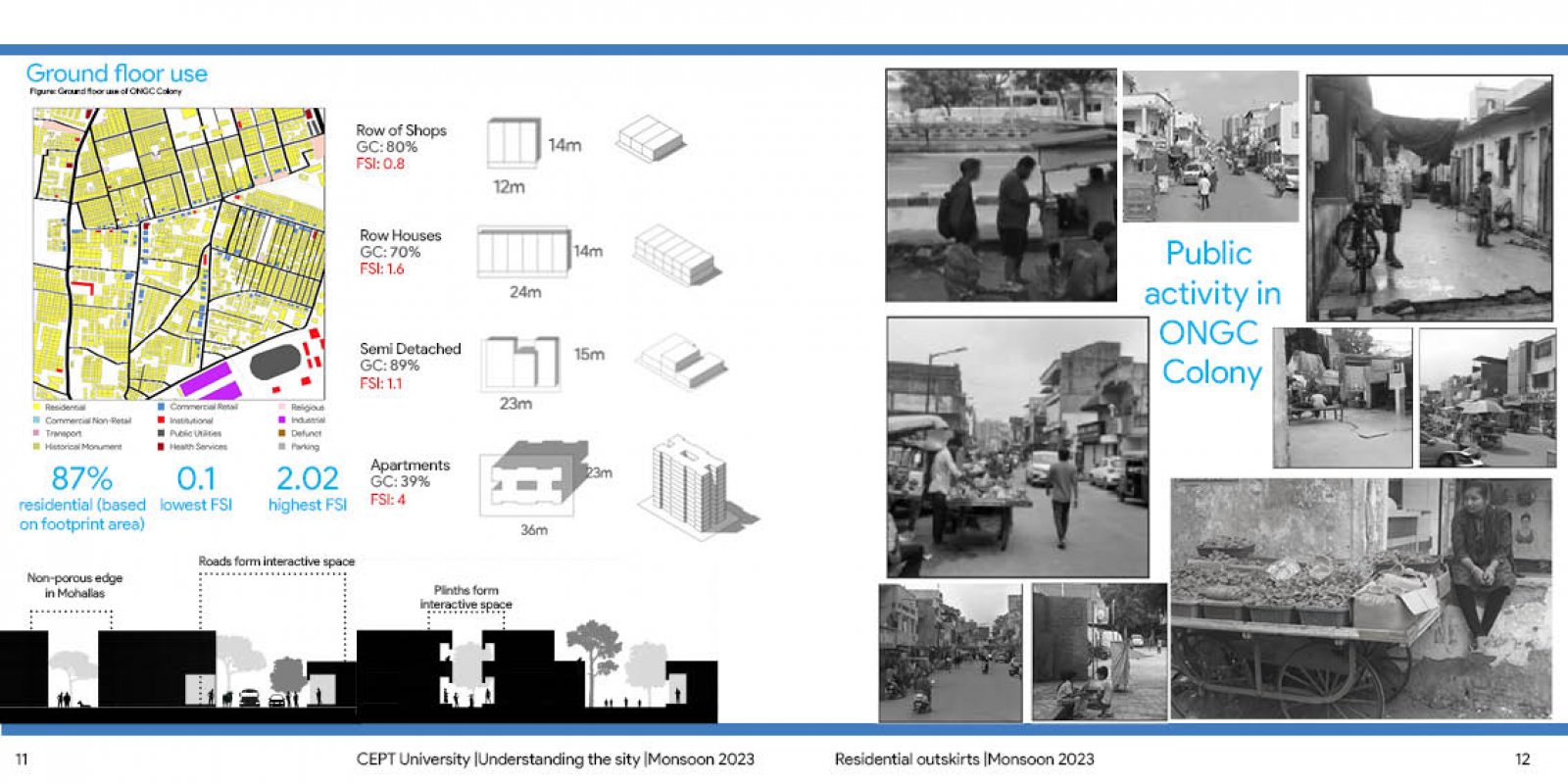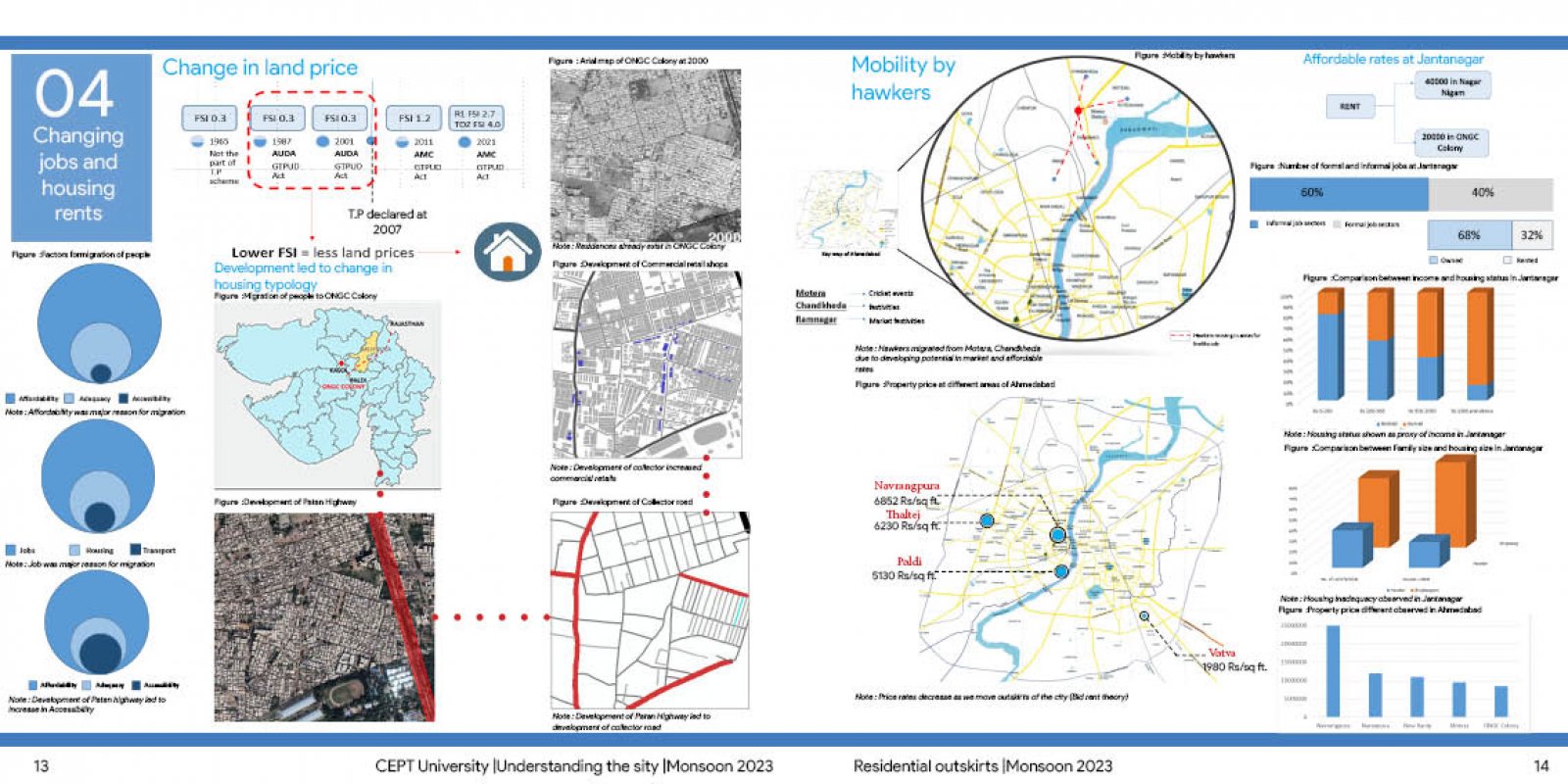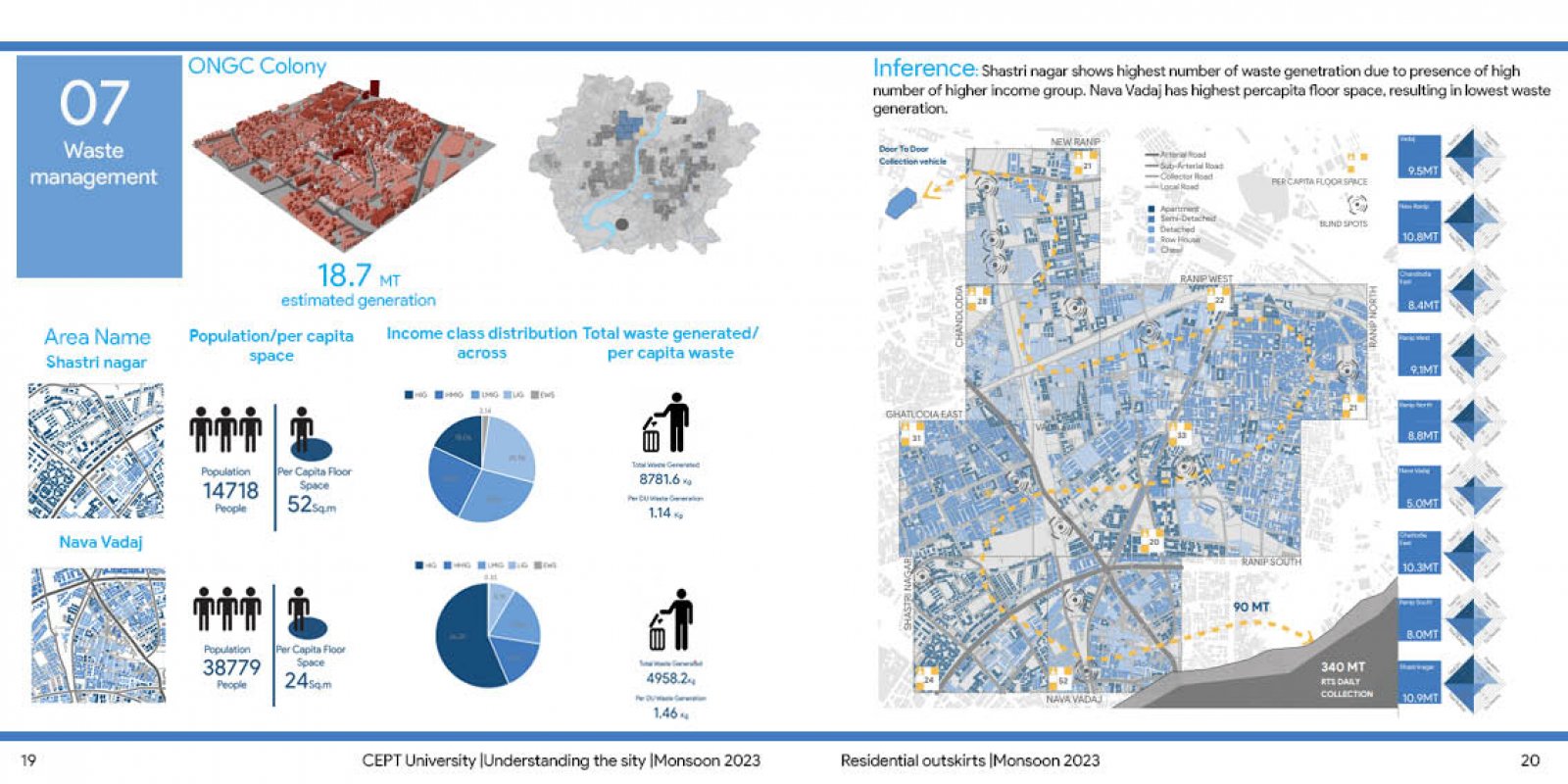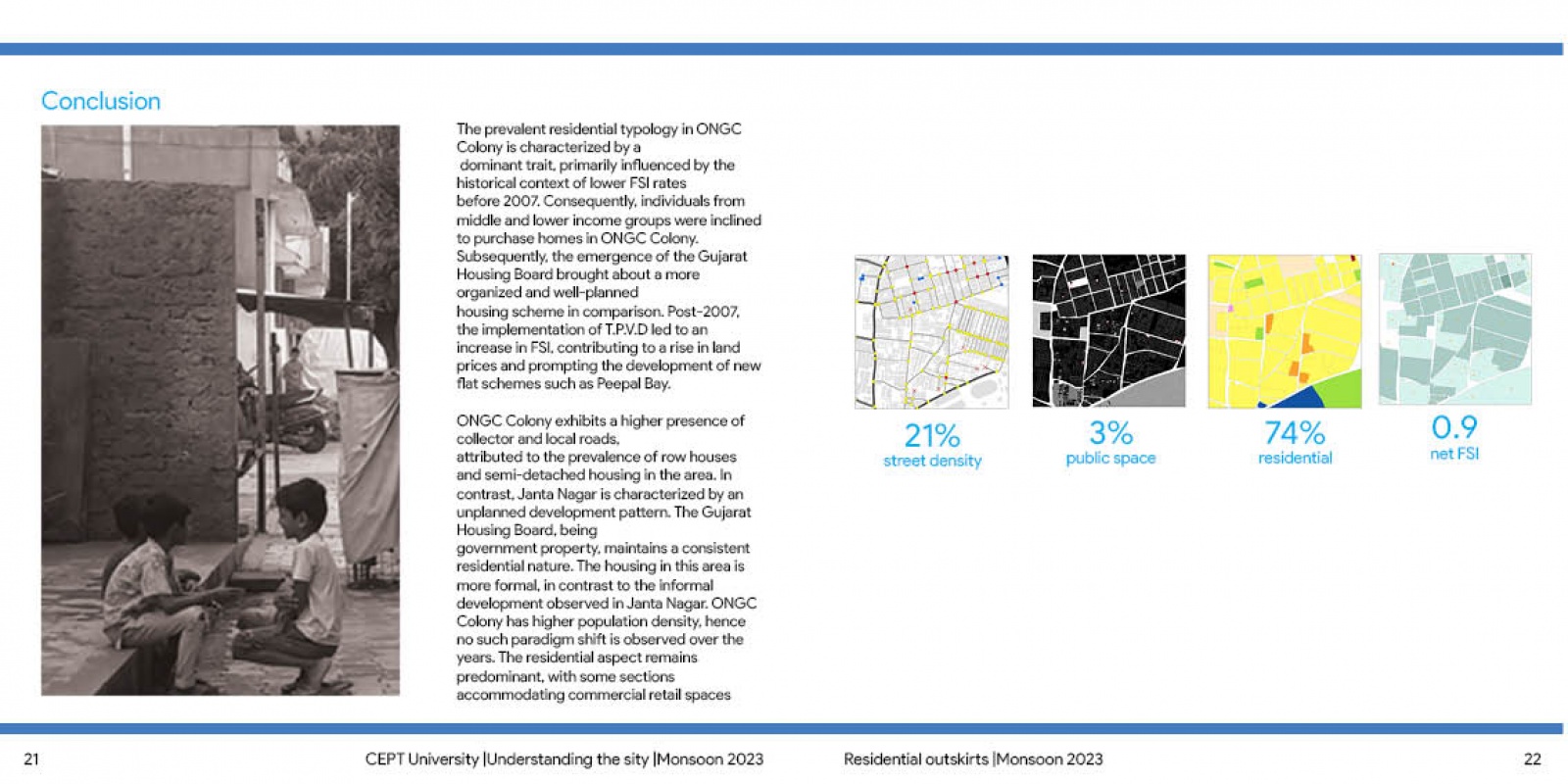- Student AVRITA GUPTA
- Code PFP23067
- Faculty Planning
- Tutor/s Umesh Shurpali,Rutul Joshi,Nitika Bhakuni,Ravi Sannabhadti,Anil kumar Roy,Tarun Patel,Maulik Chauhan,Arjun Joshi,Rushil Palavajjhala ,Jay Bhanushali,Tarunkumar Sharma
The prevalent residential typology in ONGC Colony is characterized by a dominant trait, primarily influenced by the historical context of lower FSI rates before 2007. Consequently, individuals from middle and lower income groups were inclined to purchase homes in ONGC Colony. Subsequently, the emergence of the Gujarat Housing Board brought about a more organized and well-planned housing scheme in comparison. Post-2007, the implementation of T.P.V.D led to an increase in FSI, contributing to a rise in land prices and prompting the development of new flat schemes such as Peepal Bay. ONGC Colony exhibits a higher presence of collector and local roads, attributed to the prevalence of row houses and semi-detached housing in the area. In contrast, Janta Nagar is characterized by an unplanned development pattern. The Gujarat Housing Board, being government property, maintains a consistent residential nature. The housing in this area is more formal, in contrast to the informal development observed in Janta Nagar. ONGC Colony has higher population density, hence no such paradigm shift is observed over the years. The residential aspect remains predominant, with some sections accommodating commercial retail spaces.
